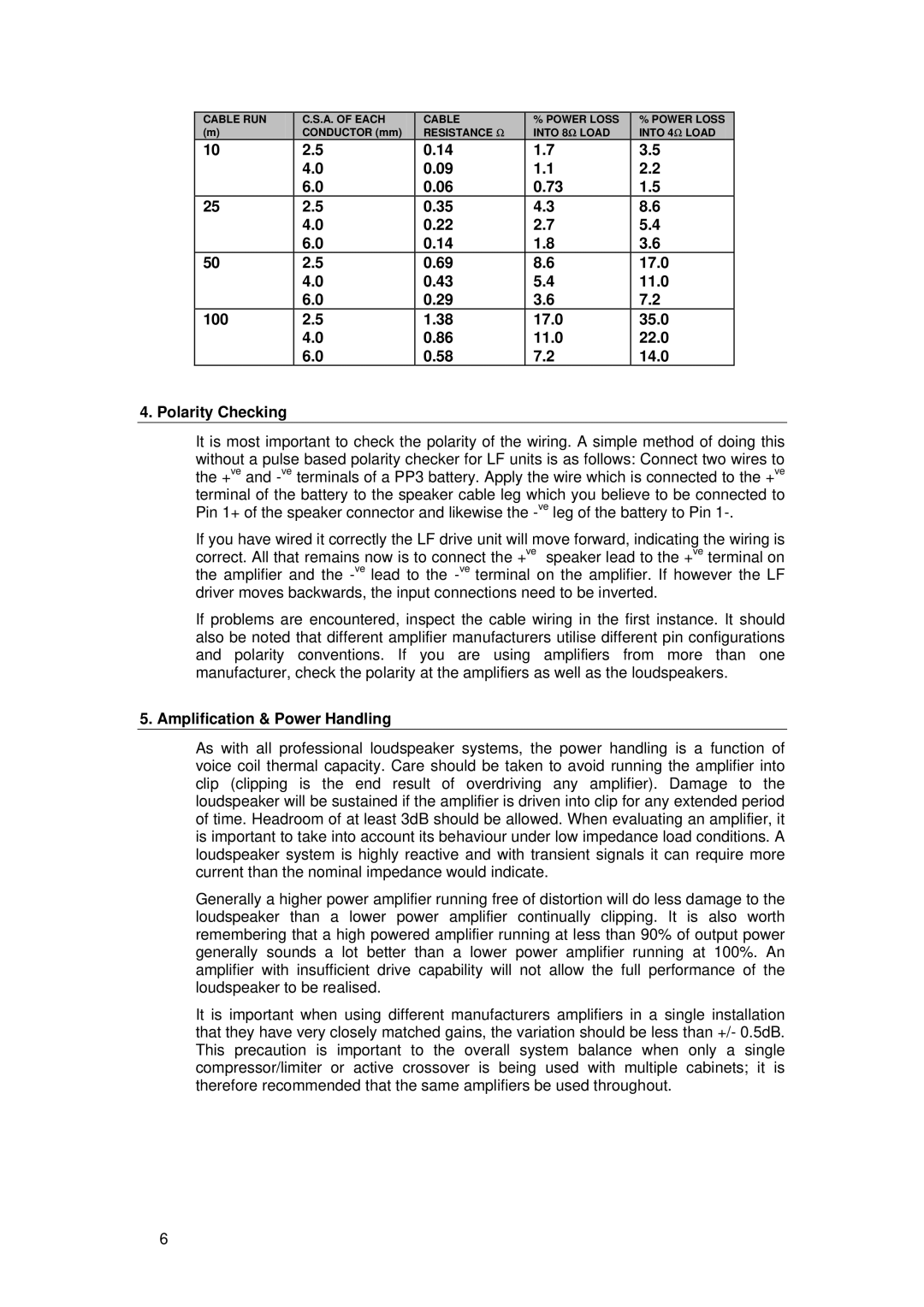B475 specifications
The Tannoy B475 is a high-performance loudspeaker that showcases the brand's commitment to excellence in sound reproduction. Designed primarily for professional audio applications, the B475 embodies a rich heritage of audio engineering, making it an ideal choice for musicians, sound engineers, and event organizers who demand clarity and power.One of the defining features of the B475 is its robust construction. Built to withstand the rigors of touring and live performances, the cabinet is crafted from high-quality materials that ensure durability without compromising sound quality. The enclosure is designed to minimize resonances, allowing the speaker to deliver a clean and accurate sound across a wide frequency range.
At the heart of the B475 is Tannoy's proprietary Dual Concentric driver technology. This innovative design integrates the woofer and tweeter into a single point source, providing a coherent sound that enhances the listener's experience. The Dual Concentric design ensures that high and low frequencies are produced from the same location, resulting in improved phase coherence and a more natural soundstage.
Another significant aspect of the B475 is its exceptional power handling capabilities. With a high sensitivity rating, the speaker can efficiently convert input power into sound output, allowing it to deliver impressive levels of volume without distortion. This makes the B475 suitable for large venues where high sound pressure levels are required.
The B475 also features advanced crossover networks that are finely tuned to optimize performance across various frequencies. These crossovers ensure that each driver operates within its optimal range, resulting in a smooth frequency response and precise imaging. The use of high-quality components in the crossover design further enhances the overall sound quality.
Versatility is another hallmark of the Tannoy B475. It can be used in a variety of setups, whether as a standalone speaker, part of a larger PA system, or in combination with subwoofers for enhanced low-end response. With multiple input options, including XLR and 1/4-inch jacks, the B475 can easily integrate into different audio systems.
In summary, the Tannoy B475 stands out as a powerful and versatile loudspeaker, thanks to its rugged build, innovative Dual Concentric driver technology, and robust performance characteristics. Whether used for live sound reinforcement or studio monitoring, the B475 delivers audio quality that truly reflects Tannoy's legacy of excellence in the world of professional audio.

